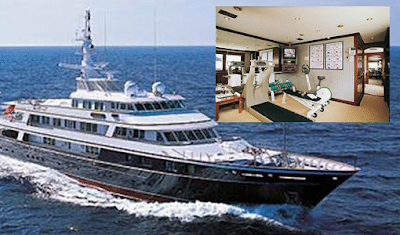Members of Congress are not the only ones having trouble balancing a budget. many families, too, are struggling to trim their own deficcit spending. Just ask yourself:
Am I borrowing to pay off old bills?
Am I spending more than 15% to 20% of my take-home pay on monthly installment debts above and beyond my home mortgage?
Am I constantly forced to dip into my checking overdraft and rarely able to bring it down?
Do I find it hard to save regularly even a small part of my income?
A "yes" to any of those question could be a warning that you are leaving beyond your means. If so, there are sensible steps you can take. It is presicely when they feel they are overwhelmed by bills and responsibilities that many people decide to plan for the future as they never have before.
Once you have concluded that you are in trouble, your firts order of business is to determine exactly how much income you receive and itemize your monthly expenses. List all your monthly bills in their order of importance. Set priorities for paying them off. Probably the first priority will be to pay your mortgage, and then your monthly utility and installment bills.
What if you find that you are still in debt over your head? Then it is a wise to seek out your creditors and negotiate to stretch out your debts, that is, to arrange a longer term of repayment in smaller amounts each month. Creditors have a great deal of latitude to extend the due date on bills by uop to 30 days. They possible can refinance a debt to allow lower, though longer, payment even if you are overdue 90 days.
If you have trouble meeting your same mortgage payments, go to your mortgage lender for help. The last thing a lender wants is to foreclose on your property. He would much rather have your cash. So, in most cases a loan can be re-schedule and payments reduced if neccessary.
You might be tempted to sign up for a consolidation loan to pay off all your debts. That is simply not smart. The lure of consolidated loan is that a bank or finance company will take over your many debts and you, in turn, will make payments to that one institution. the catch is that the interest rate on such a loan is likely to be high. So you could be replacing a heap of moderate debts with one big one that cost more to carry.
Even while working off your debt, you should plan to save. Setting aside as little as 3% to 5% of monthly income after taxes helps you start considering saving as an integral part of your budget.
Tips:
Live A Debt Free Lifestyle.Click Here!
The Do-It-Yourself Debt Settlement.Click Here!
A Step-by-step Guide To Winning A Lawsuit Yourself. Debt Settlement
Credit Bureau Disputes Request For Validation
Stop The Nasty Debt Collection Phone Calls.
How To Protect Your Paycheck From Garnishment.
All Easy-to-use Documents Are Print Ready.Click Here and find out your answer!






















 >
>

























































































